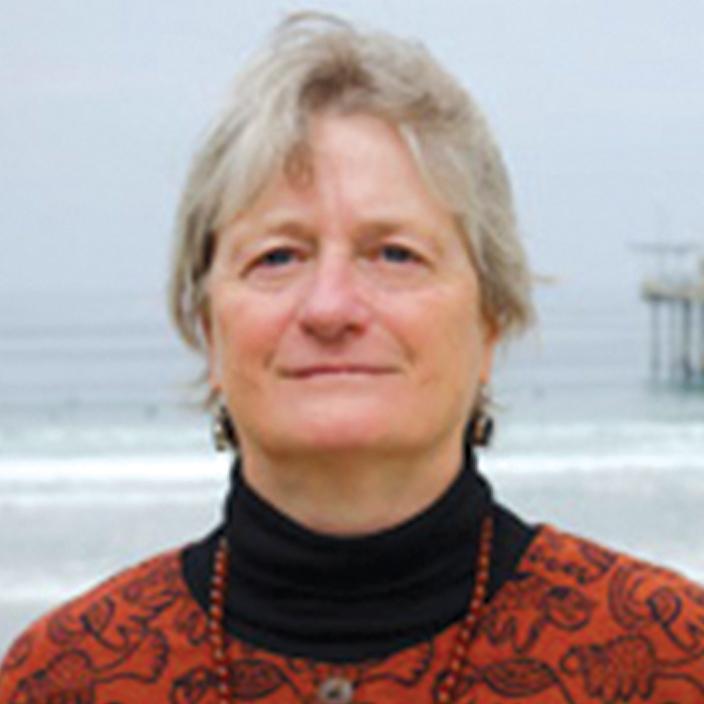
Earth is a huge magnet nearly 8,000 miles in diameter, with a magnetic field that extends far beyond. The nature, behavior, and effects of our planet's magnetic characteristics are of enormous importance, not only to its inhabitants, but to the understanding of the evolution of life and of the Earth itself. The study of the changes in our planet's magnetic field over time is called paleomagnetism, and Lisa Tauxe is an unquestioned leader in the discipline and its related specialty, geomagnetism.
Measuring current geomagnetic levels in the iron-bearing rocks of our planet is difficult enough, but piecing together the behavior of Earth's magnetic field over 4 billion years is an even greater challenge. How do scientists find and interpret samples accurately and precisely? How do factors such as heat, volcanism, sedimentation, and convection affect and distort the paleomagnetic data? And while paleomagnetism has provided some of the strongest evidence for continental drift and plate tectonic processes, those very same phenomena can obscure vital information on the intensity and direction of Earth's magnetic field in the past. Lisa Tauxe has confronted these problems and many others throughout her career, devising ingenious approaches to address and solve them.
After earning her Ph.D. from Columbia University in 1983, Tauxe first made her mark in magnetostratigraphy, which examines the rock record of magnetic pole reversals. She soon turned her attention to marine sediments, establishing their usefulness as a tool for accurately measuring paleointensity, the magnitude of Earth's magnetic field over time. In fact, the study of paleointensity has been a leitmotif of Tauxe's professional career, and it is in this area that she has made some of her most notable contributions. She found that undersea basaltic glasses, formed by volcanic processes deep under the oceans, provide an ideal repository of paleointensity data. She developed new laboratory techniques to extract data from these glasses and the more common basaltic rocks found at the sea floor.
She also pioneered the paleointensity analysis of a material no one had ever before considered: copper slag residues found at primitive foundries at archaeological sites. Like the basaltic glass, slag proved to be an excellent record of magnetic field intensities. Tauxe has used these tools and others, along with her dogged persistence and dedicated research and sample collection, to compile and measure in detail both Earth's current magnetic field (from about 5 million years ago to the present) and its ancient history, including the many polar reversals that have occurred throughout geologic time scales. A recent contribution which hearkens back to her earlier work on sedimentary geomagnetism is her solution to the problem of inclination error—a distortion in the magnetic field direction that occurs as rock layers are flattened and compressed. Tauxe developed a statistical model that compares the paleomagnetic orientation of sediment layers with the expected temporal variations of magnetic field as a function of latitude, providing a way to accurately reconcile the two. This elongation-inclination technique makes it possible to better use paleomagnetic data to reconstruct the past positions of continents.
Paleomagnetism provides a unique perspective on the history and evolution of the Earth's iron core, which creates the magnetic field by the movement of molten iron. While the surface layers of our planet can be directly sampled and studied, the inner core is forever physically inaccessible by humans, so the data encoded in the geo- and paleomagnetic record is essentially our only window into Earth's deepest workings. As such, it is imperative that scientists have ready access to paleomagnetic and geomagnetic data, and Lisa Tauxe has worked tirelessly to ensure that access as one of the prime movers behind the Magnetics Information Consortium (MagIC) database. MagIC is a global enterprise, pooling paleomagnetic data collected by researchers all over the world and open to all.
Now Research Geophysicist at Scripps Institution for Oceanography and Distinguished Professor at the University of California, San Diego, Tauxe has published two seminal textbooks and more than 140 journal articles. She is a fellow of various scientific societies and is presently the general secretary of the American Geophysical Union. This partial listing of her professional honors and positions merely hints at the significance of Lisa Tauxe's innovative and wide-ranging contributions to geophysics and to the understanding of our planet.
Information as of April 2014

